1. Feather types
Each feather on a bird is highly specialised and serves a vital role. Not only do feathers enable a bird to fly, but they also provide camouflage, warmth and keep the bird dry and are an essential part of courtship displays. Some have evolved to include aerofoil properties for efficient flight. Others can actually restrict mobility but enable spectacular displays that attract females and ensure perpetuation of the male's genes.
From Vaned Feathers to Down Feathers
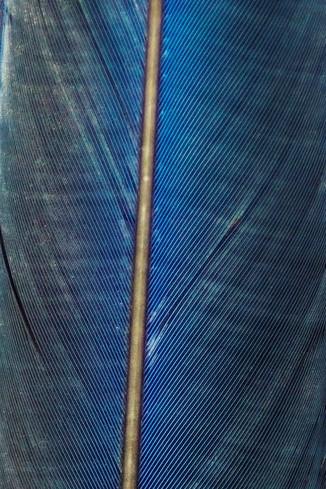
Feathers come in many forms. They are made of the protein beta-keratin and have in common basic parts, which are organised in a branching structure. The most complex are called vaned feathers and have a shaft (rachis) with lots of branches (barbs) which in turn have their own branches (barbules). The barbules are hooked together to form a stiff vane. The diversity of feathers results from the evolution of small modifications in this basic branching structure for different purposes. While there are many intermediate types, the down feathers are the smallest and least complex lacking barbules and as a result are fluffy and are often found below the contour feathers and keep the bird warm and dry.
Detail of Vaned Feather
Note the vertical, central rachis running the length of the feather with the attached diagonal barbs. The barbules are too small to be seen but clearly visible is their effectiveness in connecting the barbs together into a tight, air resistant, waterproof surface.
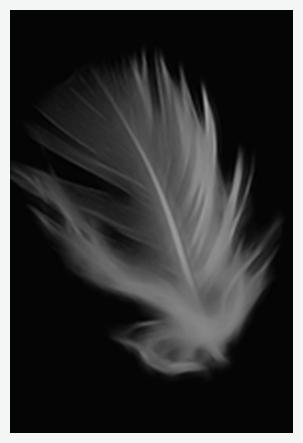
Down Feather
In constrast, the barbs connected to the vane on this down feather lack barbules and is much looser and fluffier. Down feather are found beneath the vane feathers trapping air and serving as an extra layer of protection and keeping the bird warm. Down feathers are the first to grow on chicks and in precocial species are present from birth.
Feathers on the Bird
The spectacular indian roller below in Suan Rot Fai Park was sunbathing on a cool water tank on a hot Bangkok day. Not only is this a rare, colourful display, usually briefly glimpsed when the bird is in flight, it is also an informative one. Birds usually sunbathe to spread preen oil across the feathers(see maintenance section), and also to drive parasites to the surface where they can be reached by the beak. Note the raised back feathers to allow ventilation.
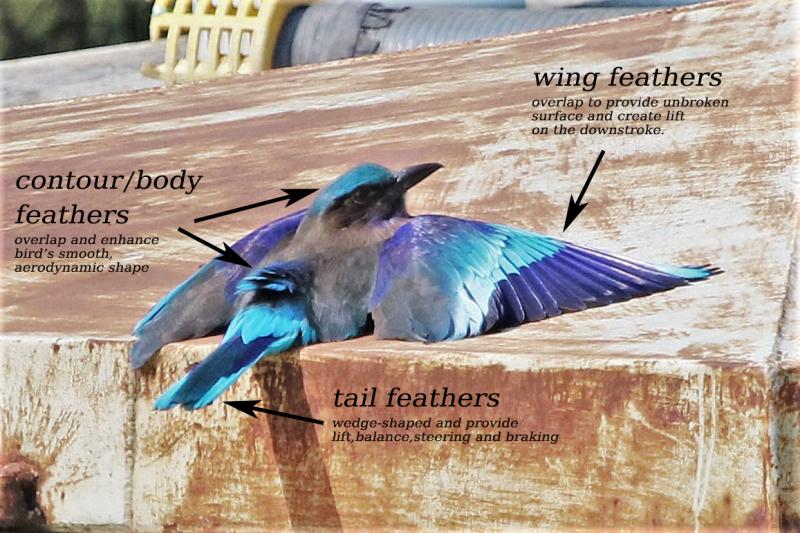
Indian Roller
1. Wing and Tail Feathers have the length, strength and flexibility to support the power that the bird needs for flight:
- overlapping wing feathers provide an unbroken surface that creates lift when the wings push downwards;
- tail feathers with a flat wedge shape help lift , balance, steering and breaking.
2. Contour feathers cover the the bird's body. Like overlapping roof tiles, they protect from the weather.
3. Soft, fluffy down feathers insulate the bird, trapping air and keeping the skin dry.
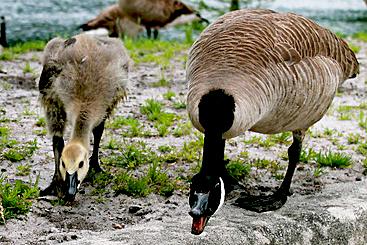
Canada Goose
Aggressive Canada geese, mother and chick, provide a contrast between the mature female (right) with her down hidden beneath a layer of contour feathers, and her immature offspring's down covered body. As with most birds, the contour feathers grow as the bird matures.
Although mature birds show a dramatic diversity in appearance, the feathers that form their plumage is consistent in type and structure.
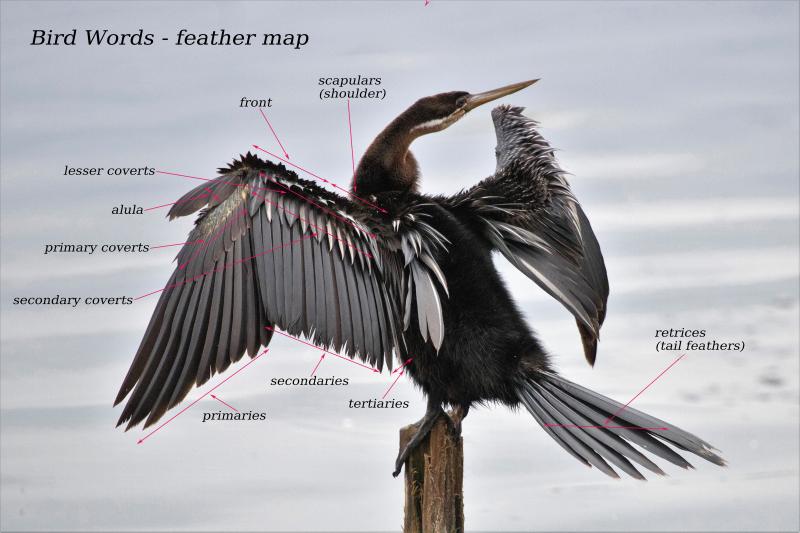
African Darter
The African Darter, dives for fish so its feathers become soaked giving them less buoyancy so they can swim underwater more easily. Like other members of the cormorant family (Phalacrocoracidae), it is frequently seen drying out in the sun, feathers outstretched. Wing and tail feathers are clearly displayed and the blurred "bokeh" backround is ideal for labelling. This bird was photographed at Bo-Langvlei, a freshwater lake near Wilderness, Western Cape, South Africa.